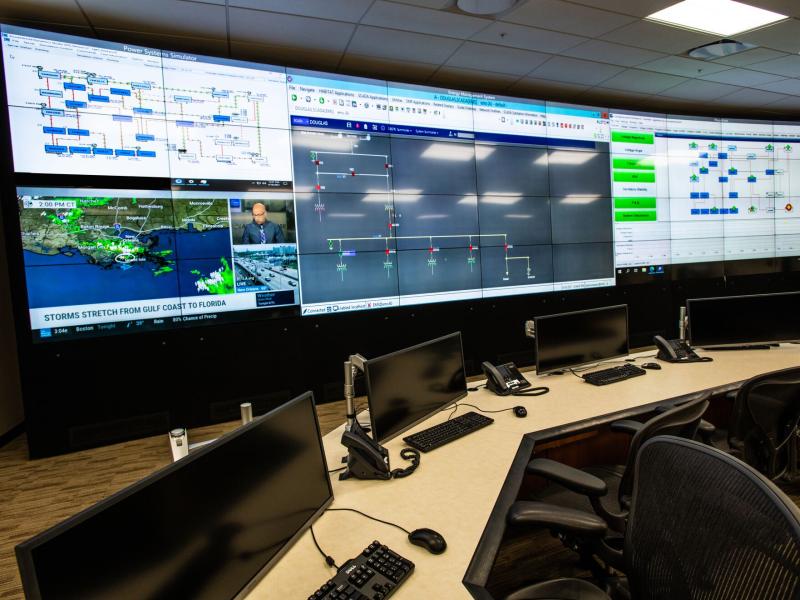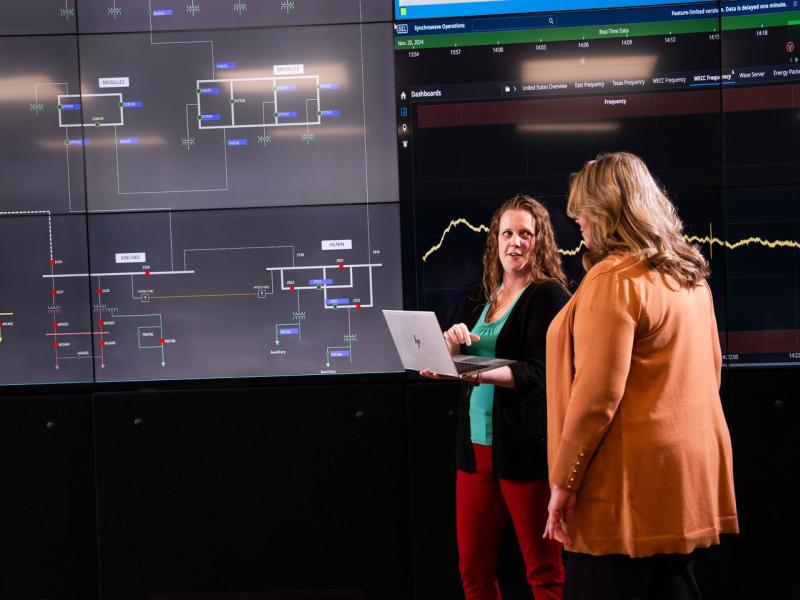Facility Capabilities
Control Rooms
The two fully functional, configurable grid control rooms in the Electricity Infrastructure Operations Center (EIOC) are built around real utility use cases and provide access to synthetic and real utility data, enabling teams to design, test, and evaluate tools and concepts in a setting that reflects current operations.

Key Features
- Control room workstations allow for close teaming of up to 14 users during simulation and exercises
- A dedicated server enclave with over half a petabyte of storage space
- Two state-of-the-art 40-foot-wide, 10-foot-tall mapboards with built-in video system
- Ability to display content from multiple sources, including live utility data feeds
- Video and audio capture and recording capabilities that allow for non-intrusive observation of users in the control room
- Virtual machine infrastructure
- Externally facing internet connection and a dedicated fiber network that allows for virtual interaction and federating with other national partners
How Can the Control Rooms Be Used?
The control rooms can be set up independently or linked together to conduct interactive studies and simulations as North American Electric Reliability Corporation functional entities. For example, one control room can act as a transmission operator while the other operates as a reliability coordinator, or one can serve as a transmission operator while the other serves as a distribution utility. The control rooms are integrated with energy management and advanced distribution management systems, enabling them to reflect real-world scenarios where actions in one room directly affect the other. Additionally, the realistic control room environment provides opportunities for the conduction of human factors studies, visual analytics, cognitive systems engineering, evaluation of human in-the-loop systems and human-machine interfaces, human-machine teaming, and evaluation of new tools and technologies to minimize operator cognitive overload.

Utility Data
The EIOC maintains and operates its own secure, dedicated server enclave to host valuable data sets that contain both real and synthetic grid data that can be used for model development, verification, and validation. Through secure connections, the EIOC has the ability to capture live data feeds from utilities, providing real-time insights into grid operations. Beyond acquiring utility and grid data, EIOC researchers know how to curate, anonymize, and tailor raw data for research purposes. By hosting unique datasets, the EIOC provides researchers and partners with real-world data for their projects.